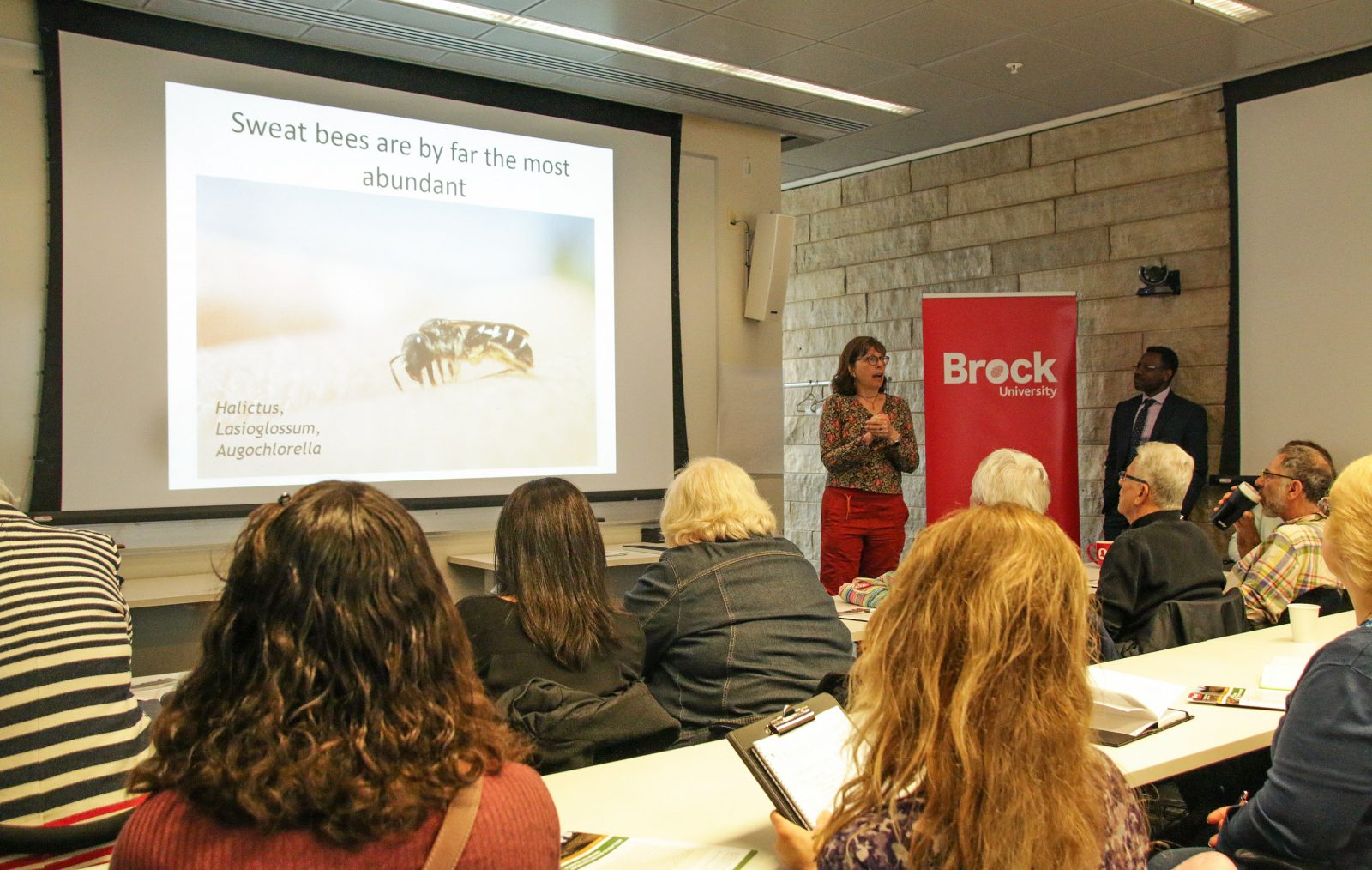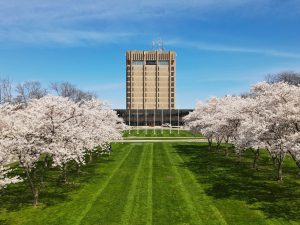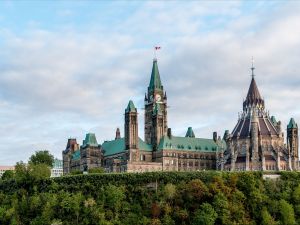 Brock Professor Miriam Richards presents a Niagara Community Observatory policy brief Tuesday, May 7 that discussed ways to increase wild bee populations in Niagara.
Brock Professor Miriam Richards presents a Niagara Community Observatory policy brief Tuesday, May 7 that discussed ways to increase wild bee populations in Niagara.In the world of bee conservation, messy is beautiful. A slightly overgrown lawn, a garden with flowers native to the area, patches of soil, and scatterings of twigs and leaves are pure paradise for these tiny creatures.
“The recipe for bees is surprisingly straightforward — provide flowers and nesting habitat, avoid pesticide use and like magic, bees appear and thrive,” Brock University Professor of Biology Miriam Richards says in her policy brief “Promoting Pollinators: Niagara Bees and How to Help Them.”
The brief is the latest to come out of Brock’s Niagara Community Observatory (NCO), and was presented in front of a packed house at the University on Tuesday, May 7.
Bee populations have been declining in Niagara, mainly because the places where they lived have been paved over or built upon.
“Every field that is converted to a new housing development results in the death of thousands of bees and myriad other small creatures,” Richards says in the brief.
The good news is that even small-scale efforts to create habitats and food sources for bees helps.
Richards recommends a number of measures people can take at the household and societal level, including:
- Grow vegetables such as squash and pumpkin that produce flowers
- Plan gardens so there’s always some flowers in bloom
- Leave patches of open soil, twigs and leaves in the garden so bees can nest and survive through the winter
- Integrate some low-growing flowers, such as clover, into lawns
- Plant gardens around government buildings with flowers and plants that attract bees
- Enable local governments to limit the size of mall and business parking lots to provide more ground for bees
Healthy, wild bee populations are crucial for the ecosystem. Bees are known as pollinators, which are animals that move from blossom to blossom collecting pollen and redistributing it.
That pollen, in turn, fertilizes an ovum in the blossom, enabling the plant to produce seeds and fruits.
Richards makes an important distinction between wild bees and honey bees, which were brought to North America during the time of colonialism to make honey for the colonists.
“Honey bees are a non-native species that competes with wild bees for access to pollen and nectar resources,” says Richards. “In fact, honey bees are implicated in declines of wild bees, because they compete with wild bees for pollen and nectar resources and may also spread diseases to which wild bees are susceptible.”
There are 800 species of bees in Canada and some 20,000 globally. Niagara has 150 species.
The largest bee population in Niagara is sweat bees, known for licking human perspiration. Other major species in Niagara include bumble bees, carpenter bees, mining bees and masked or yellow-faced bees.
Wild bee populations have been declining worldwide. In addition to habitat loss, the other major cause is poisoning from insecticides.
Richards’ Brock Bee Lab has been monitoring bee populations at the Glenridge Quarry Naturalization Site in St. Catharines since 2003 to record the impact of such conservation efforts on bee populations. She and her team have produced a number of studies on the subject.
In a recent video, Richards addresses the question: Why do bees live in groups?








